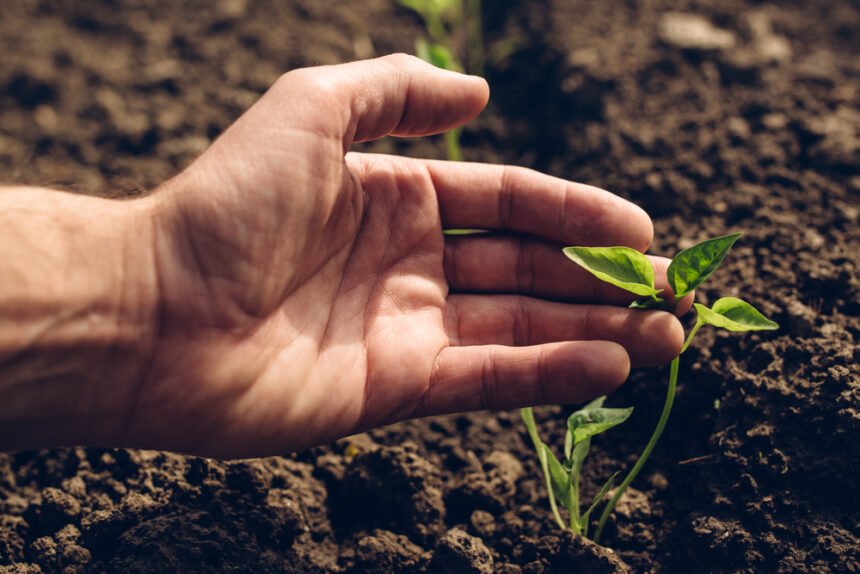When most of us shop for houseplants, we look for ones that are pretty and don’t require much maintenance. However, when we go shopping for the ideal houseplant, we often don’t realize the health benefits that they can have.
In this article, we’ll look at five plants you can grow inside your home that have proven health benefits.
Before You Get Started: Seeds and Soil
It’s easy to run out and get caught up in picking the best seeds, but if your soil quality is horrible, the result might be unsatisfactory. For a healthy and happy plant, you need good seeds, excellent soil, and the right compost, plant food, and tools.
Before you start planting, do a little research to see what would work best in your home.
If you want to start a more environmentally friendly indoor garden, you can do that too. According to Seed Needs, you can get a wide variety of non-GMO seeds. Pair them with a biodegradable peat-free pot, and you’re well on your way to sprouting healthy, eco-friendly plants.
Which Plants to Grow at Home
A beautiful plant can add a natural touch to your home. However, others can improve your health. Here are our favorites:
Spider Plant
Despite their intimidating name, spider plants can remove formaldehyde, carbon monoxide, and other toxic impurities from the air in your home. Many things you bring into your house can contain these chemicals, including waxed papers, facial tissues, paper towels and bags, particle boards, plywood paneling, and synthetic fabrics.
If you don’t have much of a green thumb and want to get rid of poor indoor air quality, a spider plant is precisely what you need. They’re one of the easiest to take care of, and it doesn’t like direct sunlight. That makes it perfect for indoor cultivation.
Spider plants can grow in any soil, and you only need to water it occasionally. Just ensure that it stays moist, and your spider plant will thrive.
Aloe Vera
Aloe vera has been used as a common natural remedy to soothe irritated skin for thousands of years. According to WebMD, it’s typically used to help treat burns, frostbite, sunburn, psoriasis, and cold sores.
You can apply the clear gel from inside the plant directly to your skin. However, the internet is filled with tutorials on making DIY aloe vera creams, treatments, and washes. Before making anything, always check with your doctor first, especially if you have any allergies.
Caring for aloe is incredibly easy. They need to be watered thoroughly so that the bottom soil stays relatively moist. However, the topsoil can be left to dry slightly between watering. Although these plants love lots of sunshine, they can turn brown if they bathe in sun rays for too long.
For the best results, keep your aloe vera plant in indirect sunlight.
Lavender
Lavender is a purple flowering plant that has a gentle and pleasant aroma. It’s best known for its stress-relieving and mental benefits and is frequently used in spa products. You can find it in essential oils, skin care creams, soaps, candles, and bath salts.
If you can, try to grow your lavender in your bedroom. The scent is soothing and can help you sleep better. The aroma can also help soothe anxiety, depression, restlessness, nervousness, and insomnia.
These plants prefer lots of sunlight and well-drained soil. They need deep watering, but do take care not to overwater them. The best time to do so is when the soil is nearly dry.
Snake Plant
Known as the “mother-in-law’s tongue,” the snake plant is another great plant to keep in your bedroom. If you want to improve your indoor air quality, this is the one for the job.
Snake plants generally work their magic at night, converting carbon dioxide into oxygen as you sleep. It also helps remove toxins from the air like formaldehyde, toluene, trichloroethylene, benzene, and xylene.
If you want to purify the air throughout your home, try keeping six to eight snake plants. You can space them out by putting one or two in various rooms. For the best results, try keeping them at about waist-height.
They’re considered relatively low maintenance, and they grow very well when placed in indirect sunlight. They don’t have to be watered often, and mature better if you let them dry out quite a bit between watering.
Rosemary
Rosemary has been used in folk medicine to help improve memory and concentration for decades. A study done by Northumbria University found that people exposed to the scent of rosemary essential oil performed better on questionnaires compared to people that weren’t.
A compound known as 1,8-cineole can be found in rosemary, and research suggests that it might increase a neurotransmitter called acetylcholine.
Ideally, try to keep rosemary plants in places like your home office or any other room where you could use a mental boost. However, using a diffuser with rosemary essential oil might make a more significant difference.
Rosemary can be planted in a pot but try to keep it where there’s lots of bright light. It should be evenly watered throughout the growing season. However, it’ll need less in the winter, so be careful not to overwater. Remember to trim your plant after it flowers.
Take Away
Plants have many remarkable properties, from healing skin conditions and purifying the air to memory-boosting and sleep improvement. Never underestimate the power of what an innocent, simple houseplant can do for your health and wellbeing.
Remember to do your research and pick plants that’ll grow comfortably in your home. Keep in mind that some plants need more maintenance than others, so try to choose those that match your growing abilities.
Selecting the right plants for your home, you can improve your health significantly and, maybe, find a new hobby in the process.

